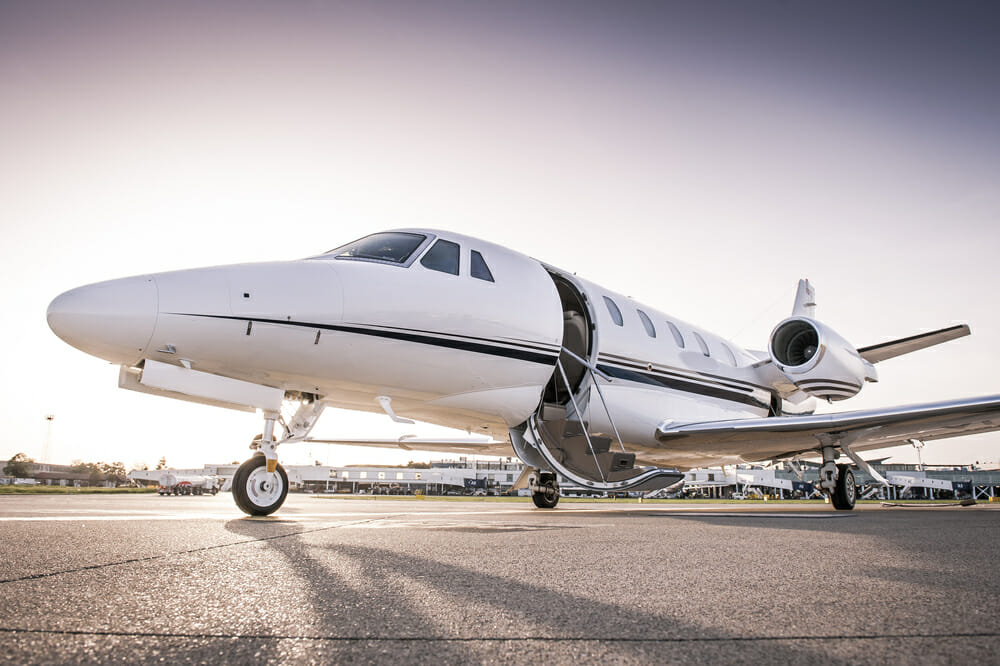In 2022, the number of hours flown by fractional aircraft saw a significant increase, surpassing the growth rate of charter flights and wholly owned flights, as reported by ARGUS TRAQPak.
According to Nick Copley, the President of SherpaReport, the upcoming year is expected to be quite busy for the fractional market. Several key trends have emerged in 2022 leading to this projected growth.
#1 –A wider variety of aircraft in fractional fleets
The fractional market is witnessing an expansion in response to the increased interest from private and corporate owners. This growing diversity in demand has prompted fractional companies like NetJets, Flexjet, PlaneSense, Airshare, AirSprint, Volato, Jet It, Nicholas Air, and flyExclusive to order new aircraft from OEMs, with deliveries scheduled for 2023 and beyond.
For instance, Flexjet has added Gulfstream G650s to its fleet and plans to introduce G700s and Challenger 3500s. NetJets is also expanding its fleet with orders placed for Bombardier Global 7500s and 8000s alongside 100 additional Phenom 300s. Other players like Volato, Jet It, PlaneSense, flyExclusive, and AirSprint are incorporating light jets into their offerings.
Mr. Copley notes that these fractional companies are not just replacing existing aircraft but are actively expanding their fleets. NetJets aims to reach a fleet of 1,000 aircraft by the end of 2023, up from 750 pre-pandemic. Flexjet is on track to grow its fleet from 160 aircraft before the pandemic to over 250 by the end of 2022, with plans for around 40 more aircraft deliveries in 2023.
#2. Reduced waitlist for becoming a fractional owner
Historically, wait times for purchasing fractional shares have ranged from months to years. However, with the influx of new aircraft into fractional fleets in the U.S, the availability for potential fractional owners to acquire their desired shares is expected to improve in 2023.
Mr. Copley mentions that smaller fractional providers offering smaller aircraft typically have shorter wait times. While obtaining a fractional share in an entry-level light jet like a Phenom 300 at NetJets could involve a wait of over a year, securing a share for a Pilatus PC-24 at PlaneSense would be quicker. The wait times at larger companies are anticipated to decrease in the coming year due to new aircraft deliveries and stabilized demand, making 2023 a favorable year for fractional buyers.
#3. Emergence of new flexible payment and management options
Traditional fractional agreements commonly include initial purchase payments, monthly management fees, hourly usage charges, and additional variables like fuel costs.
Mr. Copley highlights that newer entrants in the market have introduced alternative structures to attract customers. Examples include providers like flyExclusive and Volato offering no monthly management fees, rebates from Volato, unlimited hours and days from Volato, pilot training through fractional ownership at Jet It, day-based programs at Jet It and Airshare, and bespoke aircraft services with dedicated crew at Flexjet under its Red Label offering.
#4. Emphasis on Sustainability
In response to growing environmental concerns, fractional companies are increasingly focusing on sustainability measures. Measures include utilizing sustainable aviation fuels (SAF), purchasing carbon offsets, striving for carbon neutrality, employing book-and-claim practices for SAF usage, and reducing ground emissions.
For instance, NetJets has committed to purchasing 3 million gallons of SAF, while Flexjet offsets 300% of carbon emissions from each flight. Other companies like AirSprint, Volato, and flyExclusive have also implemented carbon offset programs. Given the limited availability of SAF at most airports, some operators are leveraging book-and-claim systems to utilize SAF where possible, with other operators covering the costs and claiming the environmental credits. Additionally, operators like AirSprint and NetJets are actively reducing their environmental impact on the ground. Some new aircraft acquisitions come with Environmental Product Declarations certifying their sustainable sourcing and manufacturing processes.
In conclusion, while economic uncertainties and rising interest rates may impact aircraft fractional ownership, the sector is expected to continue its growth in 2023 and beyond. The increasing population of ultra-high net worth individuals (UHNWI) globally and the challenges faced by commercial aviation post-pandemic are likely to drive more individuals towards private aviation. Given these trends, fractional ownership remains a cost-effective alternative to full aircraft ownership for many seekers of private aviation experiences.
Image Source: Dimitrije Ostojic / Shutterstock




































